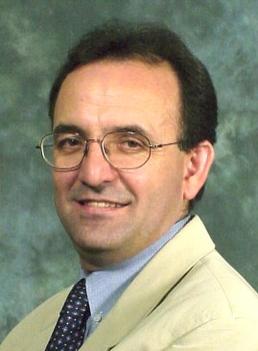Seminar 7th July 2010 3 p.m. Nuffield Theatre Room 1083 (6/1083)
Future needs and challenges in building with composites.
Professor Constantinos Soutis
University of Sheffield
- Web page
- http://www.sheffield.ac.uk/aerospace/staff/soutis
- Categories
- Materials
- Submitter
- Hans Fangohr
Abstract
Modern composite materials, made up of carbon fibres and toughened epoxy resins, are lighter/stiffer/stronger and increase fuel efficiency in aeroplanes, compared with the aluminium currently used. In the twenty first century carbon fibre reinforced plastics (CFRP) can and will contribute more than 50% of the structural mass of an aircraft. They have been used in the new Airbus A380 super jumbo, the first fully double-decked passenger jet (more than 550 seats) that took its first commercial flight in 2007 and will be used more extensively in the new Airbus A350 and Boeing 787 ‘Dreamliner’ aircraft. Boeing has decided that the primary structure (including the wing and fuselage) of the 787 will be built mostly from composite materials. The 200- seater ‘super-efficient’ passenger jet is expected to start operating in 2009-10 and will be 20% more fuel efficient than current commercial planes with up to 57% more cargo space than the Airbus A300-200. Composite materials offer a variety of advantages, however, affordability (reduced acquisition and direct operating costs, while maintaining or enhancing safety) is the key to survival in aerospace manufacturing, whether civil or military. Therefore current research effort is devoted to analysis and computational simulation of the manufacturing and assembly process as well as the simulation of the performance of the structure [1-3], since they are intimately connected.
In this talk, applications of modern composite systems will be presented and achievements, but also challenges, in the modelling and characterisation of such materials will be discussed with some thoughts on future needs, developments and prospects for novel materials and processes likely to find volume application in aerospace structures and elsewhere.
Biography
Professor Constantinos Soutis has taught and performed research in the areas of mechanics of aerospace composite materials and structures at the University of Cambridge (1986-1991), University of Leicester (1991-1994), Massachusetts Institute of Technology, MIT, in the United States of America (2000-2001 as a Visiting Professor in the Department of Aeronautics & Astronautics) and Imperial College London (1994-2002), where he held a personal chair in composite structures in the department of Aeronautics. In January 2003 he was appointed as the first Professor of Aerospace Engineering at the University of Sheffield and served as Head of Aerospace Engineering until September 2009.
Prof Soutis' industrial research and engineering experience includes work with the Structural Materials Centre of the British Defence Evaluation & Research Agency (visiting research fellow, 1995-2001), QinetiQ (Trusted Expert, 2001-2003), Dowty Propellers, the Institute of Mechanics of Materials & Geostructures (IMMG-Athens) and ABB Research in Switzerland.
He has made significant research contributions in modelling the compressive response of composite plates with open holes under uniaxial and bi-axial static and fatigue loading; filled and pin-loaded holes; impact and post-impact compressive strength; environmental effects on fibre microbuckling; repair of composite laminates and structures; modelling of matrix cracking and delamination in orthotropic laminates under uniaxial and bi-axial tension; crush energy absorption; quantitative non-destructive evaluation of composites using low frequency Lamb waves generated by piezoelectric devices. Some of the fracture models he developed on open hole compression were implemented in commercial computer design packages (Laminate Analysis Program, Composite Materials Design Tool, Version 4, 2002 by Anaglyph Ltd) currently used successfully by BAE Systems (BAE-Airbus, BAE-Military), QinetiQ and others nationally and internationally.
Professor Soutis is the author or co-author of over 250 publications, including 128 in refereed journals and made over 100 technical presentations at international conferences, seminars and symposia (with more than 10 Keynote lectures in the last 2 years). He is an associate editor of the RAeS Aeronautical Journal and member of the Editorial Board of the Composites Science & Technology Journal, the Journal of Applied Composite Materials and the Journal of Structural Integrity and Durability.
